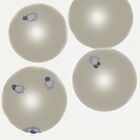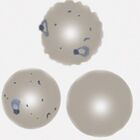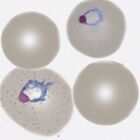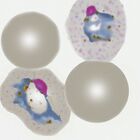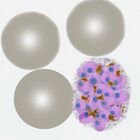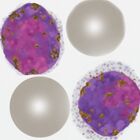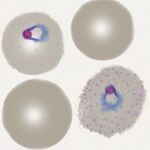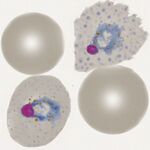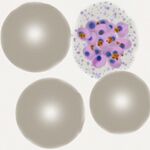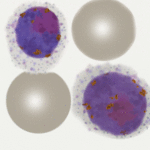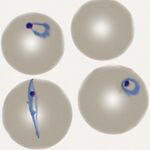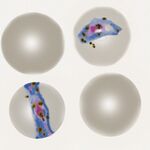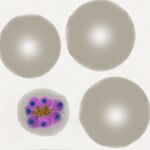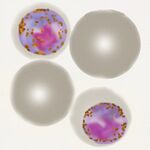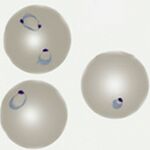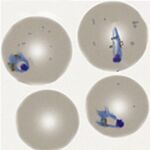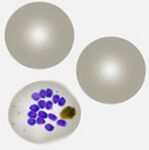Species identification: summary page: Difference between revisions
From haematologyetc.co.uk
No edit summary Tag: Manual revert |
No edit summary |
||
| (4 intermediate revisions by the same user not shown) | |||
| Line 11: | Line 11: | ||
<gallery mode="nolines" widths= | <gallery mode="nolines" widths=140px heights=150px> | ||
File:PFETc.jpg|<span style="font-size:80%">''Early trophozoite''</span>|link={{filepath:PFETc.jpg}} | File:PFETc.jpg|<span style="font-size:80%">''Early trophozoite''</span>|link={{filepath:PFETc.jpg}} | ||
File:PFLTc.jpg|<span style="font-size:80%">Late trophozoite</span>|link={{filepath:PFLTc.jpg}} | File:PFLTc.jpg|<span style="font-size:80%">Late trophozoite</span>|link={{filepath:PFLTc.jpg}} | ||
| Line 33: | Line 33: | ||
---- | ---- | ||
| Line 43: | Line 42: | ||
<gallery mode="nolines" widths= | <gallery mode="nolines" widths=140px heights=140px> | ||
File:PVETc.jpg|<span style="font-size:80%">''Early trophozoite''</span>|link={{filepath:PVETc.jpg}} | File:PVETc.jpg|<span style="font-size:80%">''Early trophozoite''</span>|link={{filepath:PVETc.jpg}} | ||
File:PVLTc.jpg|<span style="font-size:80%">Late trophozoite</span>|link={{filepath:PVLTc.jpg}} | File:PVLTc.jpg|<span style="font-size:80%">Late trophozoite</span>|link={{filepath:PVLTc.jpg}} | ||
| Line 52: | Line 51: | ||
'''Summary''' | '''Summary''' | ||
*Large and robust rings that become amoeboid during later development | *Large and robust rings that become "amoeboid" during later development | ||
*Red cells become increasingly enlarged and distorted as parasites mature | *Red cells become increasingly enlarged and distorted as parasites mature | ||
*Schüffner's dots are visible in appropriately stained thin blood films | *Schüffner's dots are visible in appropriately stained thin blood films | ||
| Line 60: | Line 59: | ||
<div style="width: 230px"> | <div style="width: 230px"> | ||
{| class="wikitable" style="border-left:solid 4px gray;border-right:solid 4px gray;border-top:solid 4px gray;border-bottom:solid 4px gray; font-size:90%; color:navy; align:center" | {| class="wikitable" style="border-left:solid 4px gray;border-right:solid 4px gray;border-top:solid 4px gray;border-bottom:solid 4px gray; font-size:90%; color:navy; align:center" | ||
| colspan="1"''|[[Plasmodium | | colspan="1"''|[[Plasmodium vivax: Morphology|'''CLICK''' for detailed description]]'' | ||
|} | |} | ||
</div> | </div> | ||
| Line 147: | Line 146: | ||
''For more information'' | ''For more information'' | ||
*[[''Plasmodium knowlesi'': Morphology|click for full description of ''P.knowlesis'' morphology]] | *[[''Plasmodium knowlesi'': Morphology|click for full description of ''P.knowlesis'' morphology]] | ||
*[[''Plasmodium knowlesi'': Morfología|haga clic para obtener una descripción completa de la morfología de ''P.knowlesis'']] | |||
*[[''Plasmodium knowlesi'': Gallery|click to visit the gallery of ''P.knowlesi'' forms]] | *[[''Plasmodium knowlesi'': Gallery|click to visit the gallery of ''P.knowlesi'' forms]] | ||
---- | ---- | ||
Revision as of 17:50, 2 April 2024
Navigation
(click blue highlighted text to return to page)
Malaria main index
>This page: Species Indentification: summary
| Plasmodium falciparum |
Summary
- Small and fine ring forms, look for typical forms accolé, multiple parasites per cell, double dot
- Characteristic Maurer's dots and clefts in late trophozoites
- The irregular and "tatty" schizonts very rarely seen in blood unless severe infection
- Characteristic elongated (often curved) 'banana' gametocytes
| Plasmodium vivax |
Summary
- Large and robust rings that become "amoeboid" during later development
- Red cells become increasingly enlarged and distorted as parasites mature
- Schüffner's dots are visible in appropriately stained thin blood films
- All forms tend to circulate with large schizont and gametocyte forms present
| Plasmodium ovale |
Brief summary
- rings are large and robust, with ring appearance often retained in late trophozoite stage
- Red cells are enlarged often with oval shape and may have characteristic fimbriation
- Schüffner's (James) dots seen in appropriately stained samples
- All forms tend to circulate, parasites are large but tend to be smaller than for P.vivax
For more information
| Plasmodium malariae |
Brief summary
- Small rings (less delicate than P.falciparum) and becoming elongated or solid as parasites mature
- Red cells often small remaining a round shape and with no added dots unless heavily stained
- All forms tend to circulate, characteristically look for "daisy" schizonts and small round gametocytes
- Parasite number is often low
For more information
| Plasmodium knowlesi |
Brief Summary
- Very limited geographical distribution within S.E Asia
- Small fine ring forms resemble those of P.falciparum and may have high parasite count
- Later rings are more solid or elongated similar to P.malariae, although faint dots may be present
- Schizonts & gametocytes are often present and may resemble P.malariae but are less "neat"
- Characteristically red cell size is unaffected, although distortion may be seen
For more information
- click for full description of P.knowlesis morphology
- haga clic para obtener una descripción completa de la morfología de P.knowlesis
- click to visit the gallery of P.knowlesi forms
